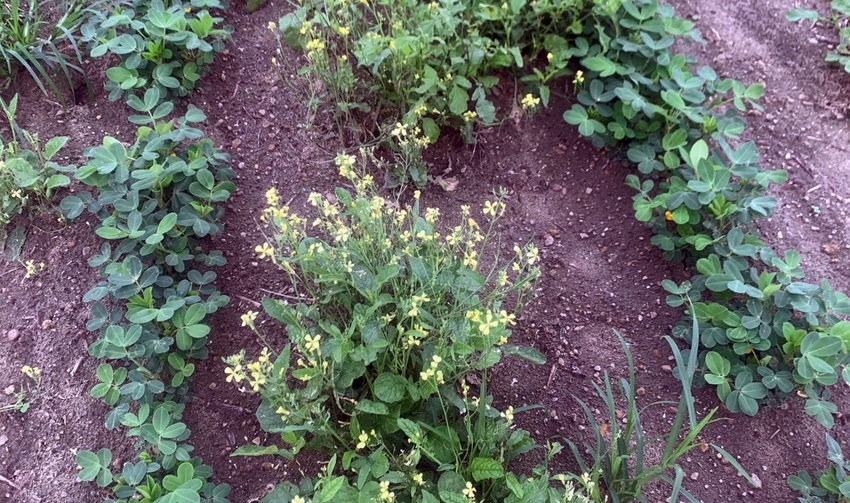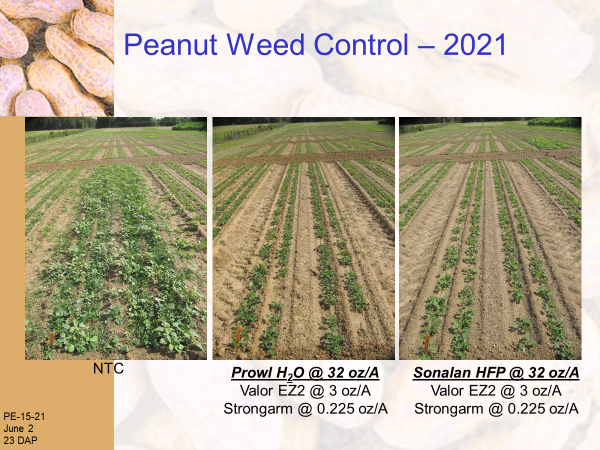August 5, 2021

Over the last few years, I have observed more and more wild radish in my research plots and in peanut production fields. While much of our attention was focused on Palmer amaranth, wild radish sneaked in.
It was not too long ago that wild radish grew like a winter annual (germinate in fall/die in summer) but now is actively growing year-round. Not exactly sure what happened here but a quote from the popular 1993 movie Jurassic Park sums it up nicely “Life finds a way!”
Here are 10 wild radish facts that might help you better understand this weed:
Wild radish is a member of the Brassicaceae plant family which also includes cultivated crops such as cabbage, broccoli, Brussel sprouts, and cauliflower.
Wild radish is not native to the U.S. It is native to the Mediterranean regions of Europe, the Middle East, and North Africa. Wild radish was first mentioned as an introduced weed in the eastern U.S. in the 1820s.
Wild radish is not the same plant as wild mustard (Sinapis arvensis). These are two very different plants. I have not observed much (or any??) wild mustard in my travels throughout Georgia over the past 22 years.
The flowers of wild radish are usually yellow, but they can also be white or pale pink.
Wild radish is an excellent pollen and nectar source for honeybees.
Wild radish seeds are formed in pods botanically known as siliques.
The seed do not shatter from the siliques. The siliques must break down before the seed can be released for germination. Each silique can contain from 4 to 10 seeds.
Research conducted in South Carolina indicated that a single wild radish plant can produce anywhere from 1,470 to 10,170 seeds/plant depending upon the time of year that emergence occurred.
Wild radish emergence is significantly reduced when seeds are buried at depths greater than 3.2”. Thus, deep tillage would be a very beneficial component of control programs.
In Australia, wild radish seeds buried at a depth of 4” for 4 years were still 43% viable.
Fortunately, there is good news regarding wild radish control in peanut. In my research plots, I have observed excellent control (≥ 90%) of wild radish with preemergence applications of Strongarm + Valor, early-post/cracking applications of paraquat + Storm, and/or postemergence applications of Cadre or Strongarm. As with most other weeds, a program approach that includes tillage and multiple herbicide applications will be the most effective for wild radish control.
Anytime something new appears in a peanut field, I am not surprised. It’s Mother Nature’s way of keeping us humble. But unlike the early days of tropical spiderwort and Palmer amaranth, much is already known about the biology and control of wild radish. I am optimistic wild radish will not become a major weed problem in peanut.
As always, good weed hunting!

Peanut weed control (23 DAP) with preemergence applications of Prowl or Sonalan + Valor + Strongarm in 2021 (lots of Palmer amaranth, wild radish, and annual grasses in the NTC plot). Credit: Eric Prostko
Read more about:
Wild RadishAbout the Author(s)
You May Also Like






